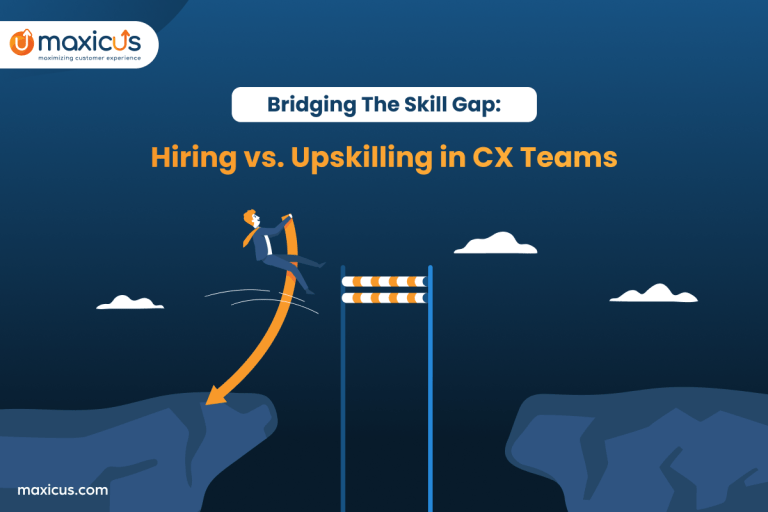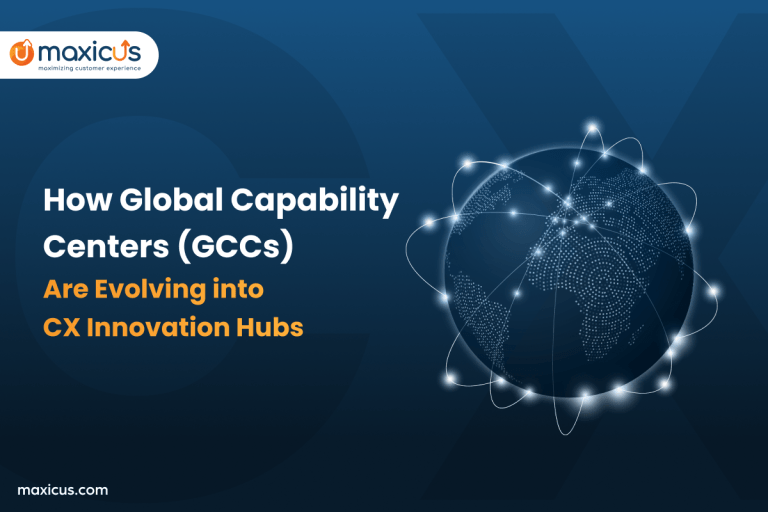Your guide to successful customer journey management
What is customer journey management?
Customer journey management is the practice of using behavioral trends and technology to optimize the customer experience. The goal of customer journey management is to minimize customers’ efforts across all channels and touchpoints, ensuring a seamless experience every time a customer interacts with your band.
Effective customer journey management should enable your business to predict customer needs, personalize the customer experience, and synchronize multichannel interactions. Being able to manage omnichannel experiences through the website, mobile devices, voice calls and social media is essential to providing a consistent, connected optimal journey.
But let’s not get confused between the customer journey and customer experience
The customer journey is what they do at each stage of the customer lifecycle. The customer experience is how they feel about the entire customer lifecycle.
Why is customer journey management is important for your business?
Understanding and empathizing with customers lays the groundwork for meaningful interactions and successful business outcomes. It also provides a tangible framework for CX initiatives.
Customer journey management enables better experiences
As you examine all phases of a customer’s journey with your brand, you’ll be able to isolate where you aren’t meeting expectations or where you are outright alienating prospects and customers. By addressing these shortcomings, you can ensure better experiences that empower your prospects and customers to interact with and purchase from your company as they desire. That can translate into faster sales cycles, and more satisfied, loyal customers who make follow-on purchases.
Pave the way for your customers to better achieve their goals
You want your customers to succeed. To do that, you need to understand their experience by mapping the customer journey. This provides insight into what is – and isn’t working – well for them. By understanding the customer experience – both as it is and the ideal state – you can create, adjust, and enhance touchpoints to ensure the most effective, efficient buying and service process. As a result, your customers will be better able to achieve their goals, from their pre-purchase through their post-purchase experience, with your company.
Provides your company with much-needed context
Chances are, if you don’t understand the customer journey, you don’t know your customers well enough. In an age when hyper-personalization reigns supreme, a shallow understanding of your customers doesn’t suffice. By designing customer journey management, you will gain an invaluable and essential view of your potential and existing customers. This more complete picture positions you to realize a better return on your marketing investments, and equips everyone in your company to better engage with prospects and customers.
Position your business to drive better results
A 2018 customer journey mapping report shows that 67% of customer experience professionals surveyed across the globe are using, or have used, customer journey mapping. Moreover, almost 90% of those using customer journey management said their program is delivering a positive impact, the most common one being an increase in customer satisfaction. Lower churn, fewer customer complaints, and higher NPS were also among the top impacts.
How to power your customer journey leveraging AI & ML?
What are the steps of a customer’s journey?
Customer journey management encompasses three primary approaches to CX: journey mapping, journey analytics, and journey orchestration.
Each approach plays a role in helping an organization understand, create, and improve customer experiences. Besides, these approaches are often combined to enhance experience design, generate journey insights, and optimize journeys.
There are three primary customer journey management capabilities and the three most frequently used ways to combine them.
- Journey Mapping is a way to visualize and communicate your customer’s experience across touchpoints and over time as they seek to achieve a specific goal.
- Journey Analytics is the science of analyzing customer behavior data across touchpoints and over time to measure the impact of customer behavior on business outcomes.
- Journey Orchestration is a way to use each customer’s entire experience to inform and personalize interactions that will improve customer experience and drive desirable outcomes.
- Journey Insights is the quantitative and qualitative information that provides an understanding of the behavior of your customers as they seek to achieve a goal.
- Journey Optimization is a closed-loop approach that uses AI and machine learning to improve the experience of each customer, so they can achieve their goal more efficiently.
- Journey Design is the process of defining the experience a customer has as they seek to achieve a goal and the interactions the company will take at each step to promote progress towards the goal.
Customer journey management takes each of these approaches to the next level. Leveraging this framework aligns your entire organization around journeys and enables journey owners across the enterprise to effectively manage, measure, and improve customer experience.
Customer journey management: Common pitfalls to avoid
Too often this management can either become an academic exercise or difficult to get agreement on. Here’s how to avoid some of the common pitfalls and focus on delivering a remarkable customer experience.
Not Enough Detail
It’s easy to build a one-dimensional map but something very simple is unlikely to help you to optimize your marketing performance.
Too Much Detail
It’ a balancing act. If you try to go into too much detail you could spend forever trying to piece the journey together and getting an internal agreement.
Only Focusing On Part Of The Journey
It can be tempting to only focus on a specific part of the customer journey; for example, the path from prospect to conversion or from initial conversion to multiple product holding.
Being Spontaneous & Subjective
Getting a team together with a whiteboard can be a valuable part of the process. But be careful not to base your work on very rapid decisions or supposition. Be data-led.
Only Considering Marketing Touchpoints
Your customers won’t distinguish between marketing communications (campaigns, events, and triggers), operational communications (statements, invoices), and service delivery.
How to ensure successful customer journey management for your brand?
The process of mapping and ultimately achieving the perfect customer journey management starts by identifying quantifiable findings, quick wins, and opportunities to improve the customer experience. If we want to create a differentiated, effortless experience for the customer, it’s vital that we understand their journey – and that we understand it from their perspective.
Let’s look at some steps
Creating a Blueprint for CX
When we fail to realize that the customer journey starts before they pick up the phone, it’s easy to assume that the initial agent-customer interaction begins at a neutral starting point. But that’s simply not true. In many cases, the call is the second or third step a customer had to take more if they were transferred through IVR or other agents first, which means the interaction begins at a negative starting point, and the agent must respond accordingly.
Customer journey mapping helps to ensure customer-centricity in every element of the contact center, from frontline interactions to the management of processes and procedures. The map will reveal key elements of the customer experience that impact decision-making and loyalty-building. It should also uncover any gaps in a procedure that restrict an agent from delivering higher first call resolution. The resulting blueprint should provide highly actionable insight, leading management to simplify call flows, optimize processes, and empower their agents through more effective training.
Measuring, Training, and Coaching
Just as it’s easy to assume the customer journey begins with the customer service call, it’s equally easy to assume that everyone in the contact center is on the same page in regards to what customer experience means. The concept of customer experience may look different from one person to the next, from management to frontline agent, unless it’s first been defined. Communication is key. Sharing multiple perspectives is the only way to get closer to understanding the customer’s perspective.
Consistently conceptualizing customer experience across the contact center should be followed by establishing the most effective metrics. A customer journey mapping exercise should reveal the best way to measure customer experience in the context of each specific project.
Establishing those metrics is vital because you can’t train on customer experience if you’re not measuring for it. It’s vital to understand how your KPIs align with the agent profile. If your main objective of the customer experience is brand loyalty, then recruits need to have strong soft skills that align with the hiring profile. From there, they need to be comprehensively trained and continually coached to embody the client’s brand and culture. Employees need to be empowered to employ strategic problem-solving and decision-making while on the frontlines and they need to feel invested in the work they do, the client they support, and the customers take care of. Side-by-side coaching is effective in both nurturing empowerment and refining decision-making skills while nurturing employee engagement.
The relationship between employee engagement, coaching, and customer experience warrants another blog post of its own. We don’t want to keep you here all day reading this one.
Driving Process Improvement
Striving to understand how to enhance call flow and client processes impact the cx will give us insight into what needs to change. How often is a customer being transferred before they get a resolution? How many channels must a customer interact with before their problems are solved? Is there anything stopping a frontline agent from having the autonomy to deliver first call resolution? What are the client’s priorities and do those align with the agent procedure? It’s these types of questions that drive process improvement.
There is, after all, a reason why humans are still doing this job, even in an age where technology could feasibly automate much of the contact center. It’s because data without a human perspective is just data. When we start probing and asking questions, then we can deliver the most transparent contact center reporting, turn concepts into action, and ensure we’re keeping the customers’ best interests at heart.
Customer Journey Management in the Contact Center
At the end of the day, we want to instill in our clients’ customers a sense of confidence in the support we’re delivering. We want to deliver an effortless experience, minimize channel switching, and make customers feel valued by the client’s brand. Customer journey mapping is the most effective strategy to achieve these goals.
In the end, customer journey management, when done properly, is developed for you to hit your organizational targets by operational optimization. No matter if they’re about service levels, efficiency, or profitability.
Outsourcing your journey management can save time and improve outcomes
Go smart and outsource customer journey management
A successful outsourced customer journey management will capture the various stages of your customer’s engagement lifecycle, structured trigger points, evaluation criteria, and related actions it generates. It also identifies potential gaps between what your business and customer requirements and operational reality. More importantly, help evaluate your business capabilities to decide your long-term future with your customers.
Outsourcing with the right partner can open new doors and pave the way for growth. Your customers expect world-class support when interacting with your organization, and Maxicus has the skills and expertise necessary to ensure that’s what happens.
Here, we understand that every customer is unique, and we’re able to tailor outsourcing solutions that fit your customers and your brand’s particular needs as well.










